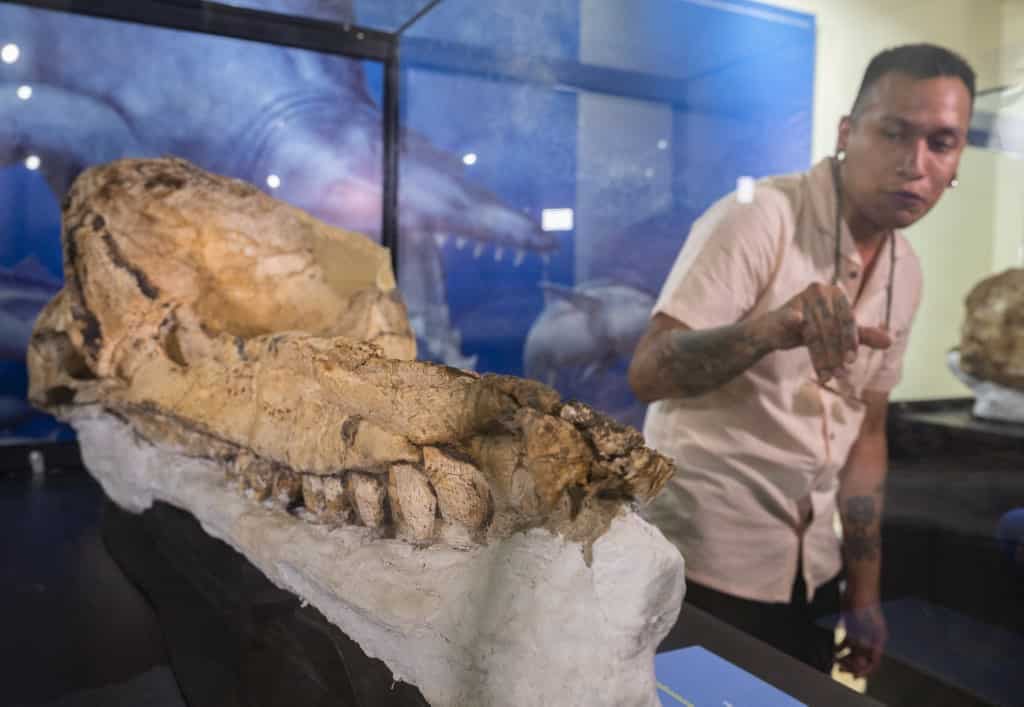A skull fossil with jaws of a new prehistoric sperm whale was found in Peru “preserved intact for seven million years” and constitutes the best of its kind, according to scientists who presented the discovery Wednesday in Lima.
“This is the best preserved fossil in the world, there is none that compares to it in quality,” Aldo Benites-Palomino, a Peruvian paleontologist and head of the team of specialists who found the remains in the Ocucaje desert, some 350 km south of the Peruvian capital and 40 km west of the coast facing the Pacific Ocean, he said.
“Normally you get fragments of teeth or the jaw,” but in this case it is “the entire skull with ear bones, plus two articular vertebrae,” explained Benites-Palomino.
The specimen, until now known as the Ocucaje macroraptor sperm whale, comes from the late Miocene and was discovered by paleontologist Mario Urbina, part of the scientific group led by Benites-Palomino.
The find was made in 2020 but “we have been working until last year to prepare it and have it ready for this exhibition,” said the scientist.
The fossil, approximately 1.30 meters long, corresponds to an adult “characterized by the presence of functional teeth in the maxilla and mandible.”
It is estimated that the total length of the animal would be between 5 and 5.5 meters long, being considered a medium-sized predator.
Benites-Palomino, who has studied sperm whales since he was a teenager and is a doctoral candidate at the University of Zurich, in Switzerland, notes that “it is the first medium-sized predator we have. Normally for its size it must have been the perfect combination of power with maneuverability and agility.”
Researchers from the Natural History Museum of the Universidad Nacional Mayor de San Marcos in Lima detail that unlike other sperm whales that predominantly fed on squid or octopus, “this animal would consume larger prey such as oceanic fish, penguins and even small marine mammals”.
The Ocucaje sperm whale macroraptor had “its large nose, specialized in the emission of very powerful sound waves, used to stun and hunt its prey”.
This discovery also indicates that sperm whales in the past were much more common than today.







